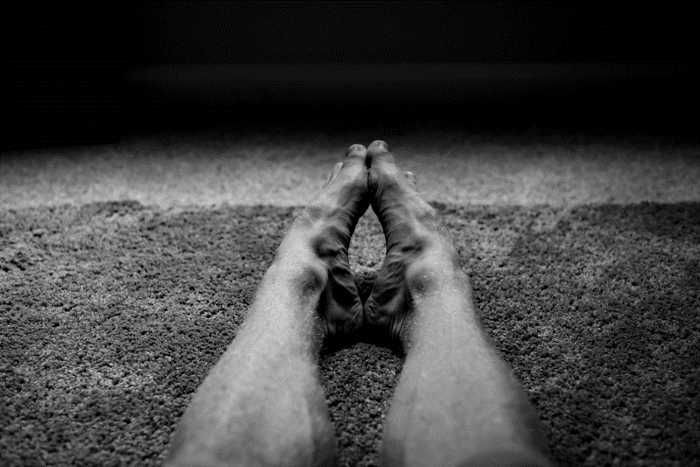Do you ever get those awful cramps in your legs? You know, the ones that make you scream and contort your body in ways that would make a yoga instructor proud? If so, you’re not alone. Many people suffer from leg cramp regularly. There are many causes of calf muscle cramps. In this article, we will discuss 10 of the most common causes. Keep reading to learn more!
Diabetes can cause leg cramps at night. It is because diabetes can cause damage to the nerves and blood vessels. When the nerves are damaged, they can’t send signals correctly to the muscles. It can cause the muscles to contract and cramp up. The damage to the blood vessels can also make it difficult for the muscles to get enough oxygen and nutrients. It can also lead to nocturnal leg cramps.
In addition, diabetes can cause dehydration, which can also contribute to leg cramps. Treatment for diabetes-related leg cramps typically includes stretching, massage, and heat therapy. In severe cases, medications may be necessary. You can try other remedies if need be.
PAD is a condition that occurs when the blood vessels that supply blood to the leg muscles and feet become narrow or blocked. It can happen due to a build-up of plaque on the vessel walls, which can restrict blood flow and cause leg pain. In severe cases, PAD can lead to leg ulcers, gangrene, and amputation. While PAD is most common in people over the age of 50,

Rheumatoid arthritis is a chronic inflammatory disorder affecting more than just the joints. Rheumatoid arthritis is a leading cause of leg cramps. The pain and stiffness of rheumatoid arthritis can make it difficult to walk or even stand for long periods. In addition, it can lead to muscles being overworked and tired, which can lead to a sharp painful muscle cramp.
In addition, the inflammation associated with rheumatoid arthritis can damage nerves and blood vessels, which contribute to blood clots in your legs. Treatment for rheumatoid arthritis typically includes a combination of medication and lifestyle changes.
Spinal stenosis is a medical condition with many nerves and spinal cord pressure caused by the spinal canal narrowing. It can lead to pain, numbness, or weakness in the legs and feet. Spinal stenosis is often caused by the natural aging process, as the vertebrae and discs begin to break down. However, it can also be caused by an injury or disease.
Spinal stenosis is a severe condition that can cause substantial pain and disability. Spinal stenosis is a common cause of leg cramps. The cramping may occur when walking or during other activities. The pain may be relieved by rest or by changing position. However, treatment is essential to help relieve symptoms and improve quality of life.
Tight muscles or tendons in the legs commonly cause leg cramps. The muscles and tendons in the legs are used for walking, running, and other activities. When these muscles and tendons get tight, they can cause the leg to cramp.
When the affected muscle or tendons are tight, they can’t stretch when you move your joints. It can lead to shortening of the muscle fibers and cramping. Muscles may become tight due to overuse, dehydration, or poor blood circulation.

One possible cause of leg cramps is sciatica. Sciatica is a condition in which the sciatic nerve becomes compressed or irritated. It can result in pain, numbness, and weakness in the leg. In addition, cramps are often caused by muscle tension and spasms resulting from sciatica.
Sciatica can sometimes indicate a more severe condition, such as a herniated disc. The good news is that sciatica is usually temporary and can be treated with rest, ice, and over-the-counter pain relievers. However, if the pain is severe or persists for more than a week, it is vital to see a doctor.
Electrolyte imbalance is a condition that can cause leg cramps. Electrolytes are minerals found in the body and are necessary to function cells, tissues, and organs properly. When there is an electrolyte imbalance, it means that there is an imbalance of electrolytes in the body.
Electrolytes include sodium, potassium, chloride, and bicarbonate. Electrolytes need to be in balance for the body to function correctly. Electrolyte imbalances can be caused by sweating, diarrhea, vomiting, and certain medications. In addition, electrolyte imbalances can lead to leg cramps, causing muscle twitching and spasms.
Smoking is a leading cause of leg cramps. It can lead to cramping and pain, particularly during exercise or when you are physically active. In addition, cigarette chemicals constrict blood vessels, reducing blood flow and oxygen to the muscles.
Cigarette smoking also increases your risk of developing peripheral artery disease (PAD), narrowing the arteries that supply blood to your legs and feet. PAD can cause severe leg cramps, muscle pain, and weakness. If you smoke, quitting smoking is the best way to prevent leg cramps.

Varicose veins are twisted, enlarged veins. They usually occur on the legs and can cause pain, cramping, and discomfort. In some cases, varicose veins can also lead to leg cramps. Leg cramps are sudden, involuntary contractions of the muscles in the leg. They can be painful and can make it difficult to walk or stand. Varicose veins are a common cause of leg cramps. The added pressure on the veins can cause them to spasm, and the increased blood flow can cause the muscles to cramp.
Varicose veins can also cause pain and swelling in the legs, making it difficult to walk or stand for long periods. If you have varicose veins, it is crucial to see a doctor so that they can be treated. There are several treatments available that can help in preventing leg cramps in your calf muscles.
Venous insufficiency is when the veins cannot adequately pump blood back to the heart. It can cause a build-up of blood in the legs, leading to leg cramps. Venous insufficiency is a common problem, affecting up to 30% of adults. The most common symptom is a feeling of heaviness or fatigue in the legs.
Venous insufficiency is often caused by an underlying medical condition, such as venous reflux or deep vein thrombosis. Other symptoms include cramping, swelling, and varicose veins. Treatment typically involves lifestyle changes, such as wearing compression stockings and elevating the legs. In some cases, medications or surgery may be necessary to prevent muscle weakness.
There are many different causes of leg cramps. In some cases, the cause is unknown. However, there are several common causes of leg cramps, including dehydration, electrolyte imbalance, smoking, varicose veins, and venous insufficiency. If you experience idiopathic leg cramps, it is vital to see a doctor to determine and treat the cause. In some cases, surgery may be necessary. Treatment typically involves lifestyle changes or medications.